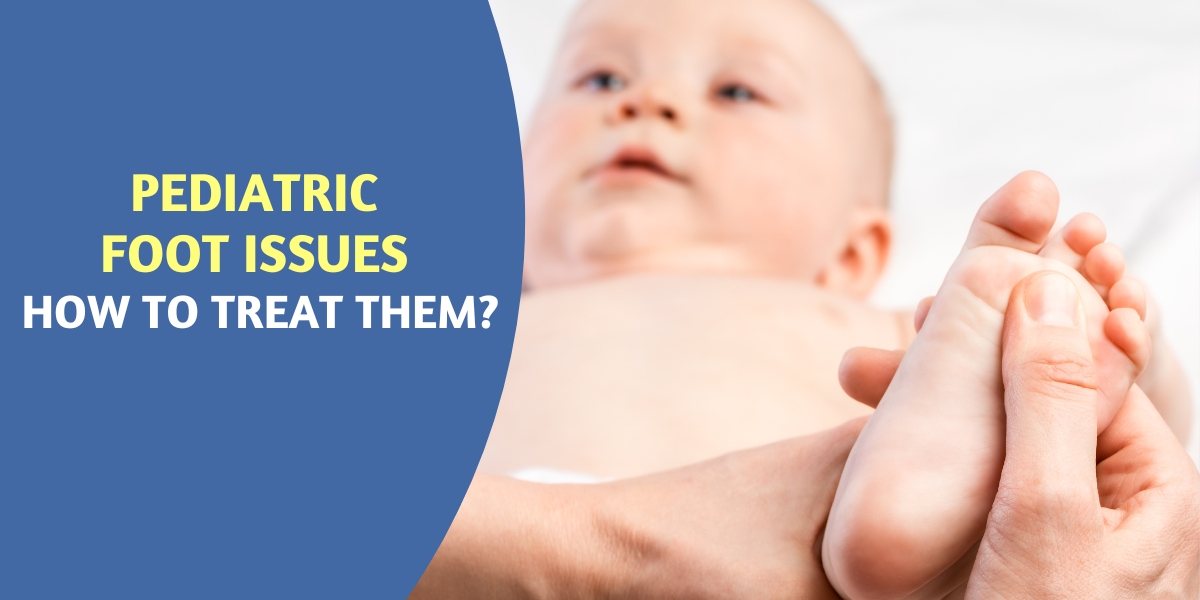As parents, we are always careful about our children’s health and well-being. One area that sometimes goes unnoticed until it becomes a problem is their feet. Pediatric foot issues are surprisingly common and can considerably affect a child’s ability to play, walk, or participate in other activities. Here’s a closer look at some typical pediatric foot issues and how healthcare professionals effectively treat them.
1. Flat Feet (Pes Planus)
What It Is:
Flat feet are a condition where the arches of the feet do not develop properly. This can cause the entire foot to touch the ground when standing.
Symptoms:
- Aching or pain in the feet, especially after activity
- Difficulty with walking or running
- Shoes wearing out unevenly
Treatment:
Most children will naturally develop arches as they grow. However, in cases where flat feet cause pain or mobility issues, treatments may include:
- Orthotics: Special insoles to support the arch
- Physical Therapy: Exercises to strengthen the muscles in the feet and legs
- Surgery: Rarely recommended, only in severe cases
2. Heel Pain (Sever’s Disease)
What It Is:
Sever’s Disease is an inflammation of the growth plate in the heel. It often occurs in active children during puberty when bones grow faster than muscles and tendons.
Symptoms:
- Pain in the back or bottom of the heel
- Swelling and redness at the heel
- Discomfort when walking or running
Treatment:
Treatment focuses on reducing inflammation and discomfort, including:
- Rest: Limiting physical activities that exacerbate the pain
- Ice Therapy: Applying ice packs to reduce swelling
- Heel Cups or Cushions: To provide extra support during healing
3. Toe Walking
What It Is:
Toe walking refers to a pattern where children walk on the balls of their feet or toes without putting their heels down.
Symptoms:
- Persistent walking on toes beyond the toddler years
- Difficulty with heel-to-toe walking
Treatment:
While some children outgrow this habit, persistent toe walking may require:
- Physical Therapy: Stretching and strengthening exercises to improve gait
- Orthotics or Braces: To help encourage proper foot placement
- Surgery: In rare cases, to lengthen the Achilles tendon if it’s exceptionally tight
4. Ingrown Toenails
What It Is:
An ingrown toenail occurs when the edge of a toenail grows into the surrounding skin, often causing pain and, sometimes, infection.
Symptoms:
- Redness, swelling, and pain around the toenail
- Pus or other signs of infection
Treatment:
Early intervention can prevent more serious issues. Treatments include:
- Soaking Feet: In warm water and using antiseptic solutions
- Proper Nail Cutting: Ensuring nails are cut straight across and not too short
- Medical Intervention: In severe cases, a healthcare provider may need to remove part of the nail
5. Plantar Warts
What It Is:
Plantar warts are caused by a viral infection in the outer layer of the skin and often develop on the soles of the feet.
Symptoms:
- Small, grainy growths on the soles of the feet
- Pain when pressure is applied, such as standing or walking
Treatment:
- Over-the-Counter Remedies: Salicylic acid treatments are often effective
- Cryotherapy: Freezing off the wart using liquid nitrogen
- Prescription Medications: For more persistent cases
Preventative Measures
To help prevent foot issues, encourage your children to:
- Wear properly fitting shoes that provide adequate support
- Maintain good hygiene, including regular washing and nail trimming
- Stretch before physical activities to avoid strains and sprains
Early Intervention for Common Childhood Foot Problems
Keeping an eye on your child’s feet and addressing issues early can help prevent more severe problems in the future. If you notice any of these common pediatric foot issues, it’s crucial to consult a healthcare professional like Dr. Chetan Oswal, a renowned Foot and Ankle Surgeon in Pune, who can recommend the appropriate treatments to ensure your child’s feet remain healthy and strong.





